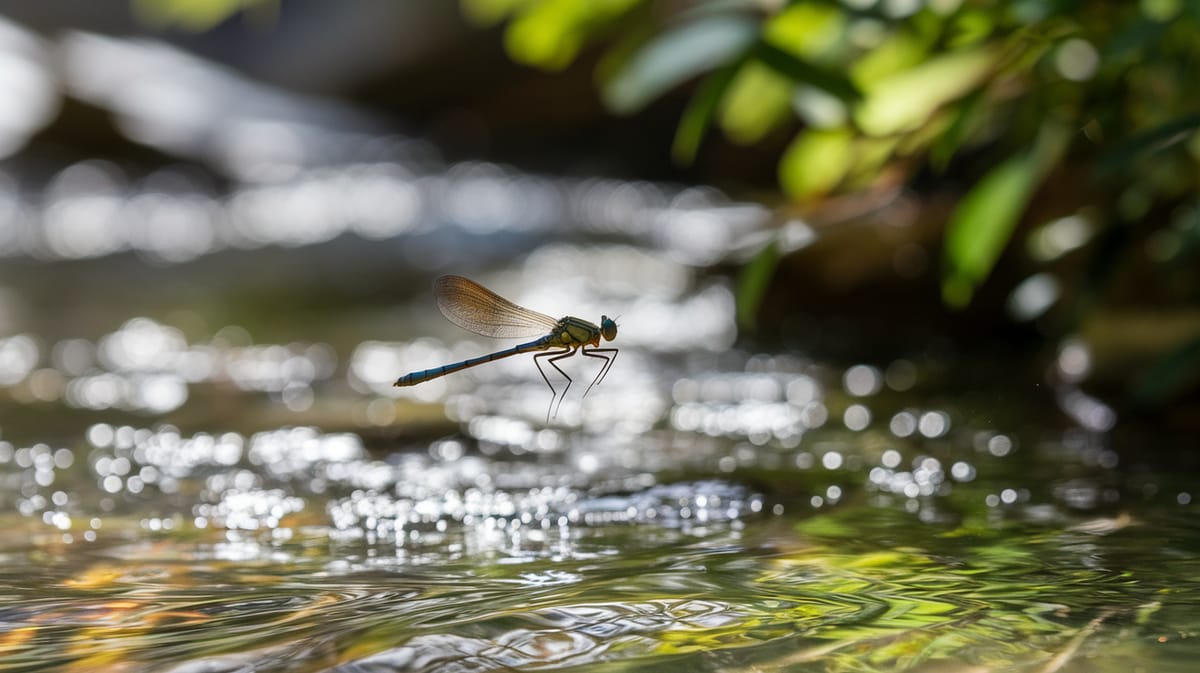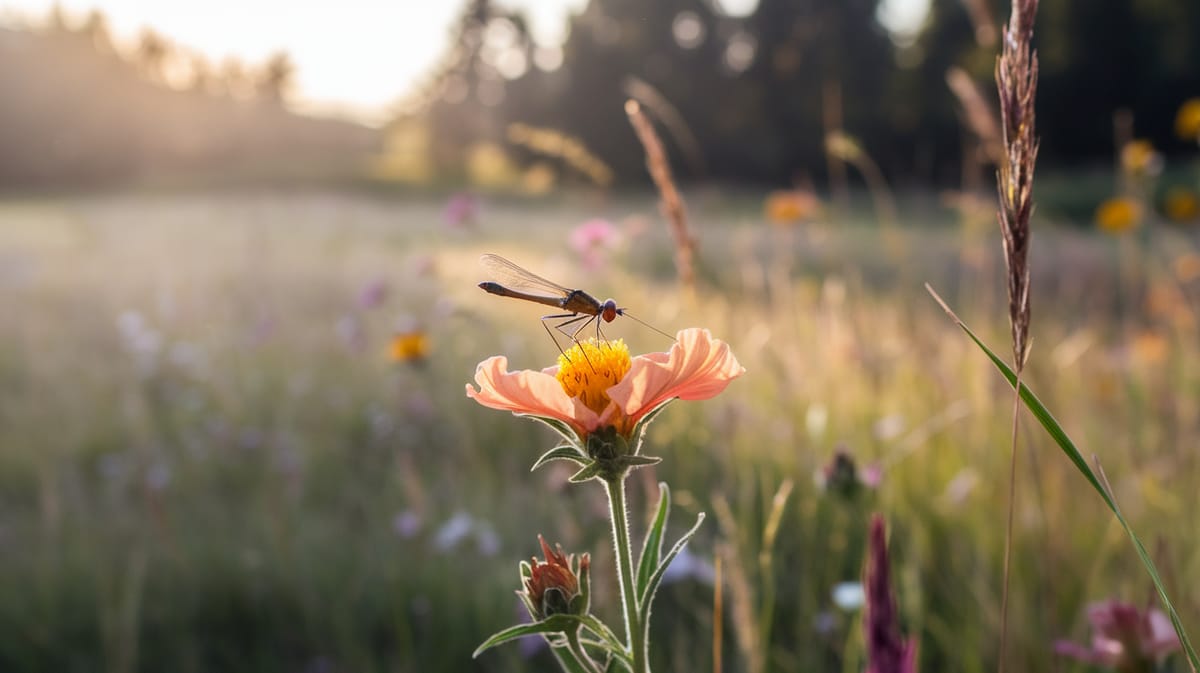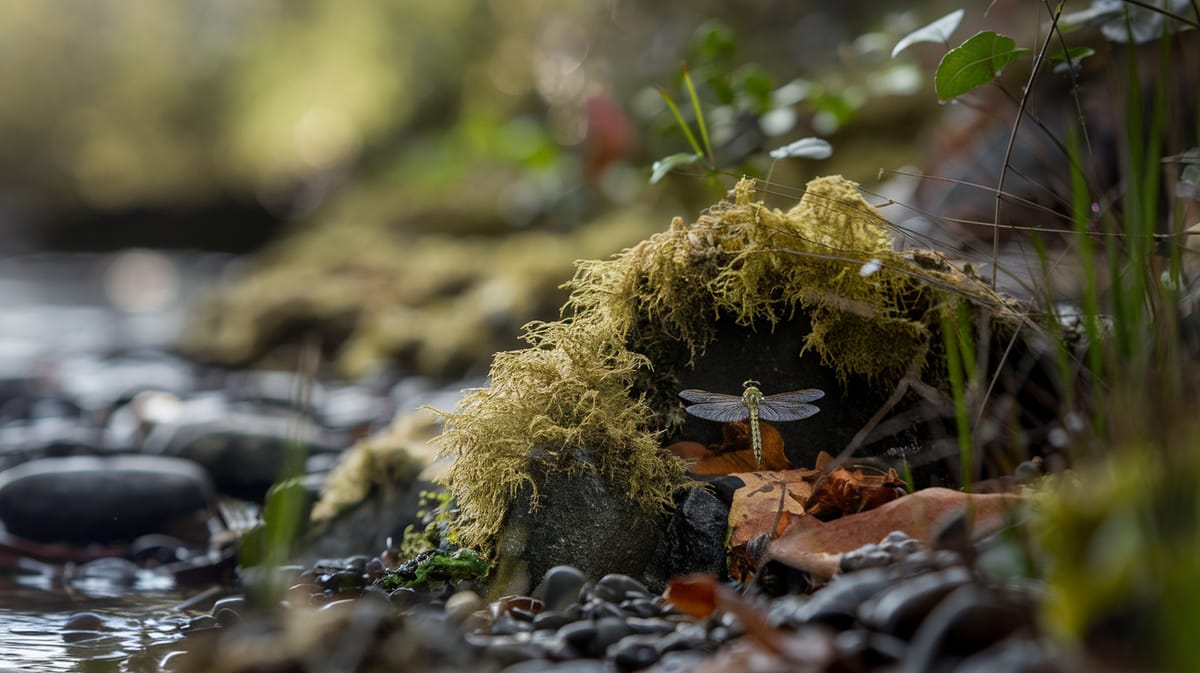Dobsonfly
Majestic and mysterious, the Dobsonfly showcases impressive mandibles and a life cycle that aids in aquatic ecosystems. Its larvae, known as hellgrammites, are vital for stream health.

Key Insights at a Glance
Did You Know?
Taxonomy & Classification
Dobsonflies are known for their large mandibles and aquatic larval stage, reflecting their adaptation to freshwater environments. Let's understand the evolutionary journey and classification of these remarkable predators.
Global Presence
The genus Corydalus consists of about 35 species, predominantly found in the Americas, thriving in diverse freshwater habitats.
Ancient Lineage
Dobsonflies have existed since the Jurassic period, showcasing resilience and adaptation through significant environmental changes over millions of years.
Lifecycle and Growth
A remarkable journey of transformation from Egg to Adult.
Egg
Females lay clusters of 1,000 eggs on rocks or vegetation near water, ensuring the larvae's aquatic start.
Larva
Aquatic larva, known as hellgrammites, are voracious predators, hunting small aquatic creatures in streams and rivers.
Pupa
After leaving water, larvae transform into pupae in moist soil or under logs, undergoing significant metamorphosis.
Adult
Adults are short-lived, with large mandibles for males, focused on reproduction rather than feeding.
Dietary Habits
A voracious predator with keen hunting skills, this insect feeds on aquatic insects, small crustaceans, and occasionally fish.
| DIET TYPE | DESCRIPTION |
|---|---|
| Primary Diet | Primarily consumes aquatic insects like mayfly and caddisfly larvae, using sharp mandibles to catch prey. |
| Secondary Diet | Occasionally feeds on small crustaceans such as amphipods, contributing to diet diversity in aquatic environments. |
| Occasional | Rarely captures small fish, taking advantage of its habitat to exploit available food sources. |

Behaviour and Adaptations
Discover the impressive traits that define the Dobsonfly's survival tactics.
Defensive Mandibles
Males use large mandibles for intimidating threats, not for feeding.
Aquatic Larvae
Larvae live in water, aiding in oxygen absorption and feeding.
Nocturnal Activity
Active mainly at night, reducing predation risk.
Ecosystem Impact
Dobsonflies play a critical role in maintaining ecological balance through their interactions and lifecycle.
Aquatic Predator
Dobsonfly larvae prey on aquatic insects, controlling their populations and maintaining stream health.
Food Web Component
As both predator and prey, Dobsonflies are a crucial link in aquatic and terrestrial food webs.
Nutrient Recycler
Their decomposition enriches soil, promoting plant growth and ecosystem productivity.
Conservation Challenges
Understanding and addressing the major threats to Dobsonfly populations.
Habitat Degradation
Water pollution and deforestation reduce Dobsonfly breeding sites and food sources.
Climate Change
Altered river flow and temperature shifts impact Dobsonfly life cycles.
Over-extraction of Water
Excessive water use disrupts stream habitats essential for Dobsonflies.
Frequently Asked Questions
How long do Dobsonfly live?
Adult Dobsonflies live for only about a week. In contrast, their larval stage, known as hellgrammites, can last up to three years in freshwater habitats before they pupate into adults.
What do Dobsonfly eat?
Adult Dobsonflies do not feed, while their larvae, hellgrammites, are predatory and consume aquatic insects, small fish, and other invertebrates.
Are Dobsonfly poisonous?
Dobsonflies are not poisonous. While they may look intimidating, especially the males with their large mandibles, they do not pose a threat to humans through venom or toxins.
Are Dobsonfly endangered?
Dobsonflies are not considered endangered. They are widespread, especially in North America, and their populations are stable, inhabiting clean, flowing freshwater environments.
What do Dobsonfly symbolize?
Dobsonflies often symbolize transformation and adaptability due to their long larval phase and brief adult life. They can also represent clean water, as they thrive in unpolluted aquatic habitats.
Do Dobsonfly bite?
Male Dobsonflies cannot bite effectively, despite their large mandibles. Female Dobsonflies can bite if threatened, but their bite is not harmful. They mainly use their mandibles for mating or defense.
What color are Dobsonfly?
Dobsonflies are typically grayish-brown with some variations. Their wings may have darker patterns, and their bodies are generally dull in color, fitting well in their natural environments.
Does a Dobsonfly have wings?
Yes, Dobsonflies have wings. They possess two pairs of wings, with the forewings being longer and more prominent. These wings are used primarily for short flights during their brief adult life.
What does a Dobsonfly look like?
Dobsonflies are large insects with elongated bodies, long antennae, and two pairs of veined wings. Males have prominent mandibles, while females have shorter, more functional ones. They have a fierce appearance but are harmless.
Is a Dobsonfly an insect?
Yes, a Dobsonfly is an insect. It belongs to the order Megaloptera and is known for its distinctive life cycle, including a prolonged larval stage and a short-lived adult phase.
Related Insects
Discover insects with similar characteristics to Dobsonfly - including shared habitats, diets, and taxonomic classifications
Share this profile
Help others discover Dobsonfly
